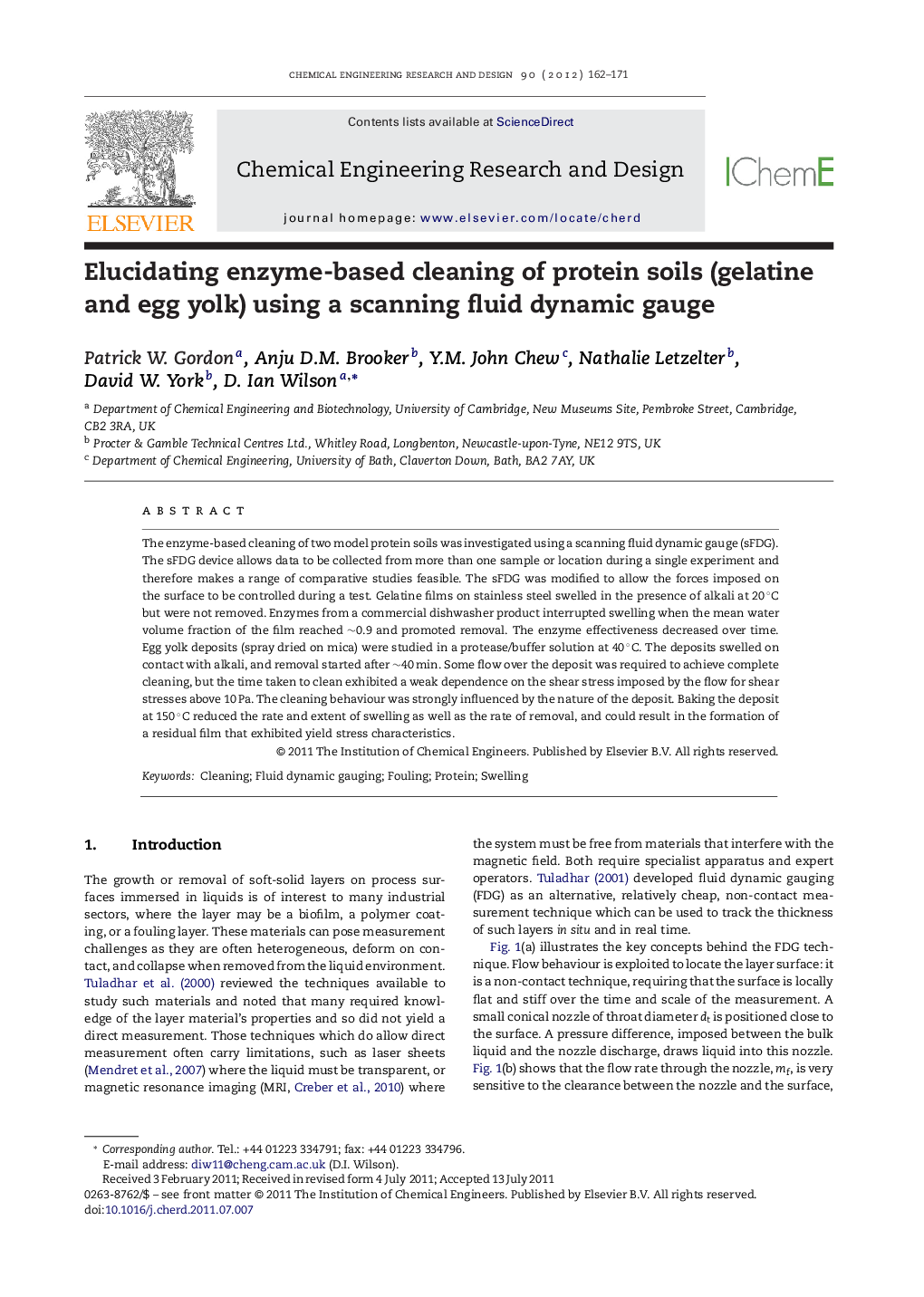| Article ID | Journal | Published Year | Pages | File Type |
|---|---|---|---|---|
| 10385298 | Chemical Engineering Research and Design | 2012 | 10 Pages |
Abstract
The enzyme-based cleaning of two model protein soils was investigated using a scanning fluid dynamic gauge (sFDG). The sFDG device allows data to be collected from more than one sample or location during a single experiment and therefore makes a range of comparative studies feasible. The sFDG was modified to allow the forces imposed on the surface to be controlled during a test. Gelatine films on stainless steel swelled in the presence of alkali at 20 °C but were not removed. Enzymes from a commercial dishwasher product interrupted swelling when the mean water volume fraction of the film reached â¼0.9 and promoted removal. The enzyme effectiveness decreased over time. Egg yolk deposits (spray dried on mica) were studied in a protease/buffer solution at 40 °C. The deposits swelled on contact with alkali, and removal started after â¼40 min. Some flow over the deposit was required to achieve complete cleaning, but the time taken to clean exhibited a weak dependence on the shear stress imposed by the flow for shear stresses above 10 Pa. The cleaning behaviour was strongly influenced by the nature of the deposit. Baking the deposit at 150 °C reduced the rate and extent of swelling as well as the rate of removal, and could result in the formation of a residual film that exhibited yield stress characteristics.
Related Topics
Physical Sciences and Engineering
Chemical Engineering
Filtration and Separation
Authors
Patrick W. Gordon, Anju D.M. Brooker, Y.M. John Chew, Nathalie Letzelter, David W. York, D. Ian Wilson,
